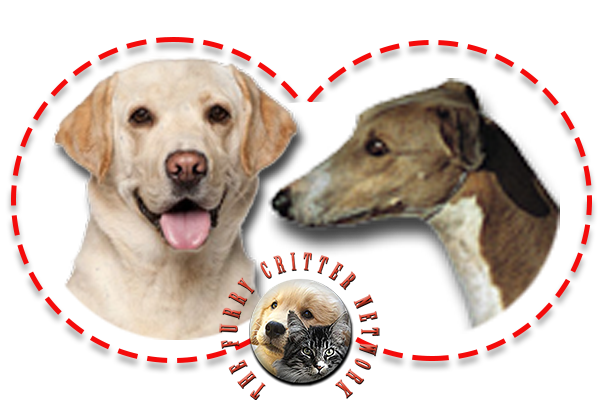Behavior
Greyhounds are considered to make good pets, and are known for their loving nature and enjoyment of the company of humans or other dogs, though how well a Greyhound tolerates the company of other small animals such as cats depends on the individual dog's personality. Greyhounds will typically chase small animals; those lacking a high 'prey drive' will be able to coexist happily with toy dog breeds and cats.
Greyhounds live most happily as pets in quiet environments. They do well in families with children, as long as the children are taught to treat the dog properly with politeness and appropriate respect. Greyhounds have a sensitive nature, and gentle commands work best as training methods.
Occasionally, a Greyhound may bark; however, they are generally not barkers, which is beneficial in suburban environments, and they are usually as friendly to strangers as they are with their own families. A 2008 University of Pennsylvania study found that Greyhounds are one of the least aggressive dog breeds towards strangers, owners, and other dogs.
A common misconception regarding Greyhounds is that they are hyperactive. This is usually not the case with retired racing Greyhounds. Greyhounds can live comfortably as apartment dogs, as they do not require much space and sleep almost 18 hours per day. Due to their calm temperament, Greyhounds can make better "apartment dogs" than smaller, more active breeds.
Many Greyhound adoption groups recommend that owners keep their Greyhounds on a leash whenever outdoors, except in fully enclosed areas. This is due to their prey-drive, their speed, and the assertion that Greyhounds have no road sense. In some jurisdictions, it is illegal for Greyhounds to be allowed off-leash, even in off-leash dog parks. Due to their size and strength, adoption groups recommend that fences be between 4 to 6 feet (1.2 to 1.8 m) tall, to prevent Greyhounds from jumping over them. As per most breeds being rehomed, Greyhounds that are adopted after racing tend to need time to adjust to their new lives with a human family. Many guides and books have been published to aid Greyhound owners in helping their pet get comfortable in their new home.
Health
Greyhounds are typically a healthy and long-lived breed, and hereditary illness is rare. Some Greyhounds have been known to develop esophageal achalasia, gastric dilatation volvulus (also known as bloat), and osteosarcoma. Because the Greyhound's lean physique makes it ill-suited to sleeping on hard surfaces, owners of both racing and companion Greyhounds generally provide soft bedding; without bedding, Greyhounds are prone to develop painful skin sores. The average lifespan of a Greyhound is 10 to 14 years.
Due to the Greyhound's unique physiology and anatomy, a veterinarian who understands the issues relevant to the breed is generally needed when the dogs need treatment, particularly when anesthesia is required. Greyhounds cannot metabolize barbiturate-based anesthesia in the same way that other breeds can because their livers have lower amounts of oxidative enzymes. Greyhounds demonstrate unusual blood chemistry, which can be misread by veterinarians not familiar with the breed and can result in an incorrect diagnosis.
Greyhounds are very sensitive to insecticides. Many vets do not recommend the use of flea collars or flea spray on Greyhounds if the product is pyrethrin-based. Products like Advantage, Frontline, Lufenuron, and Amitraz are safe for use on Greyhounds, however, and are very effective in controlling fleas and ticks.
Greyhounds have higher levels of red blood cells than other breeds. Since red blood cells carry oxygen to the muscles, this higher level allows the hound to move larger quantities of oxygen faster from the lungs to the muscles. Conversely, Greyhounds have lower levels of platelets than other breeds.
Delayed haemorrhage following trauma or routine surgery is more common in greyhounds, with one study reporting significant haemorrhage in 26% of greyhounds following routine gonadectomy, compared to 0-2% in other dog breeds. This is often termed greyhound fibrinolytic syndrome or breed-associated hyperfibrinolysis, where in there is a disorder of the fibrinolysis system without derangement of the primary or secondary coagulation systems, and is also not related to platelet count. In this syndrome there is initial adequate hemostasis following trauma or routine surgical procedures, however 36–48 hours later the site undergoes inappropriate hyperfibrinolysis. This results in delayed bleeding which can result in significant morbidity and mortality. Standard pre-operative blood work does not identify those at risk. It is distinct from common bleeding disorders in other breeds such von Willebrand's disease, which is uncommon in greyhounds. Although high quality research data are lacking, it is thought that this condition can be prevented and treated by administering antifibrinolytic medication such as tranexamic acid via the oral or parenteral route. Intensive care and blood product administration may also be required in severe cases.
Greyhounds do not have undercoats and thus are less likely to trigger dog allergies in humans (they are sometimes incorrectly referred to as "hypoallergenic"). The lack of an undercoat, coupled with a general lack of body fat, also makes Greyhounds more susceptible to extreme temperatures (both hot and cold); because of this, they must be housed inside. Some greyhounds are susceptible to corns on their paw pads; a variety of methods are used to treat them.
The key to the speed of a Greyhound can be found in its light but muscular build, large heart, highest percentage of fast twitch muscle of any breed, double suspension gallop, and extreme flexibility of its spine. "Double suspension rotary gallop" describes the fastest running gait of the Greyhound in which all four feet are free from the ground in two phases, contracted and extended, during each full stride.






